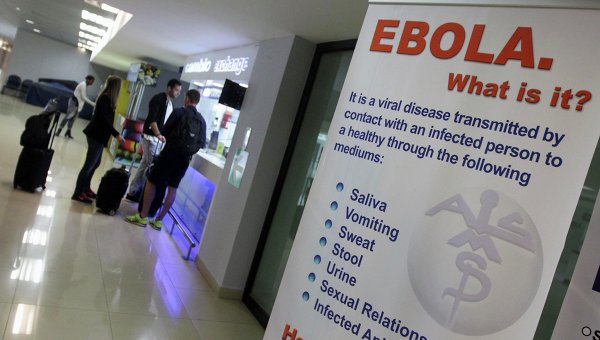
The United Nations Ebola mission chief has warned there is still a “huge risk” that the deadly virus could spread to other parts of the world.
Anthony Banbury, head of the UN Mission for Ebola Emergency Response (UNMEER) was speaking to the BBC in Freetown, the capital and one of the worst-affected areas of Sierra Leone, where the virus is spreading rapidly.
Banbury did not say if targets the agency had set in the fight against Ebola had met Monday’s deadline. However, he said last week that they were “most certainly going to fall short” of their targets in some affected areas.
The targets, set in October, were for the proportion of people being treated and for the safe burial of bodies. Upon setting the goals, Banbury told the UN Security Council that by December, “70 percent of all those infected by the disease must be under treatment” and “70 percent of the victims safely buried” if the outbreak was to be halted.
The interim goal was set to try to reverse the upward trend in the numbers of new cases still being reported across much of the affected region. The ultimate goal for the UN agency is “absolutely zero human cases of Ebola,” Banbury told the BBC.
Banbury said the targets were being met in “the vast majority” of areas in Guinea, Sierra Leone and Liberia. But in some areas, including in and around the capital of Sierra Leone, “we are falling short,” he said. “It is in those areas where we really need to focus our assets and our capabilities,” he added.
Sierra Leone and Liberia: Not on track to meet targets
While Banbury didn’t specify whether the agency had achieved its goals, the most recent data from the World Health Organization indicate they likely did not.
As of Nov. 26, only 23 percent of cases were being isolated in Liberia, and 40 percent in Sierra Leone, far short of the goal to isolate seven-in-ten cases by tomorrow (Dec. 1). Neither country has enough burial teams to achieve a target of safely burying 70 percent of Ebola-related deaths, according to the WHO.
The 2014 Ebola outbreak was first reported in March, when the initial cases emerged in Guéckédou, Guinea, near the borders of Sierra Leone and Liberia. Experts say the location of the outbreak — a highly porous region with no known history of Ebola — and the underdeveloped public health infrastructure in the affected countries has contributed to the unprecedented magnitude of the current outbreak.
Since being declared a public health emergency in August, the epidemic has spread to three other West African countries: Nigeria and Senegal, where the outbreaks have been brought under control, and Mali, where new cases were reported as recently as this week.
Although global aid has increased substantially, response efforts are still hampered by shortages of medical equipment and trained personnel. In October, WHO Assistant-Director General Dr. Bruce Aylward acknowledged that to reach the Dec. 1 target of 70 percent containment would be “really pushing the system hard.”
“If we don’t do it in 60 days and we take 90 days: No. 1, a lot more people will die that shouldn’t; and No. 2, we will need that much more capacity on the ground to be able to manage the caseload,” said Dr. Aylward, who is directing WHO’s Ebola response in West Africa.
‘Huge risk’ of further global transmission of Ebola
Almost 7,000 people have now died from Ebola in West Africa and more than 16,000 have been infected. The latest figures show that between 200 and 300 people are still dying every week.
While new infections appear to be stabilizing in Liberia and Guinea, they’re rising sharply in Sierra Leone, particularly in the country’s north and west, according to the WHO. More than 1,300 people have been infected in Sierra Leone in the past three weeks, and the country’s total number of infections will soon eclipse those in Liberia, the worst-affected country.
With the outbreak still not under control, there is still a “huge risk” that Ebola “may spread around this sub-region, or someone could get on a plane to Asia, Latin America, North America or Europe,” Banbury told the BBC.
Experts have long advised that the risk of further international transmission will remain high until the outbreak is brought under complete control at its epicenter in West Africa.
“As long as there is one case of Ebola in any country, it is a threat not only to that country, it is a threat to the region and to the world,” Banbury said last month during a trip to Liberia. “That is why it is so important to get down to zero cases as quickly as possible.”
That will require a long-term commitment, said Banbury, urging caution against becoming complacent based on preliminary signs of progress in some areas. “We’re by no means out of the woods yet,” Banbury said, “but we’re headed in the right direction.”
The next goal of WHO’s plan is to isolate all Ebola patients and provide safe burials for all by January 1. They haven’t said whether or not they would revise that goal if they fail to meet the 70 percent target by tomorrow’s deadline.
